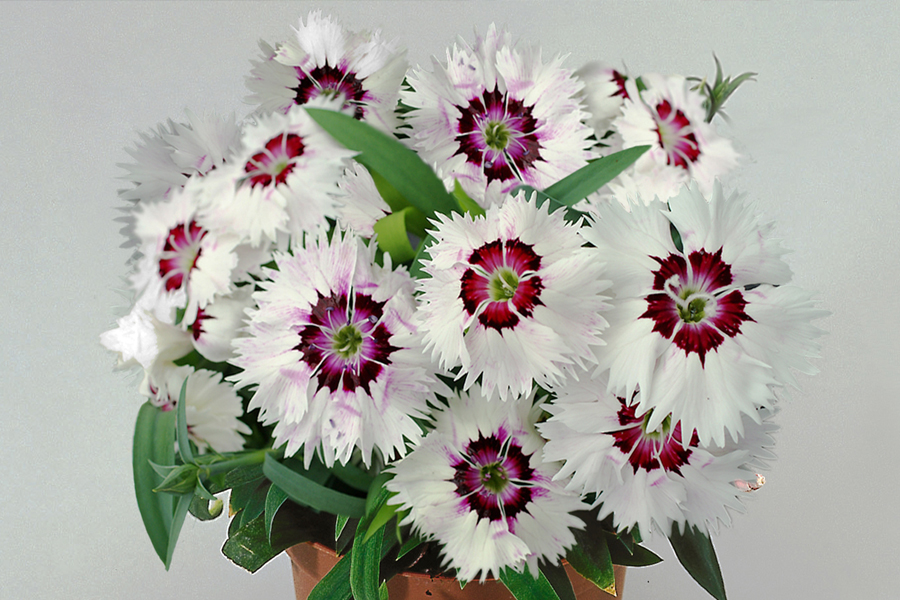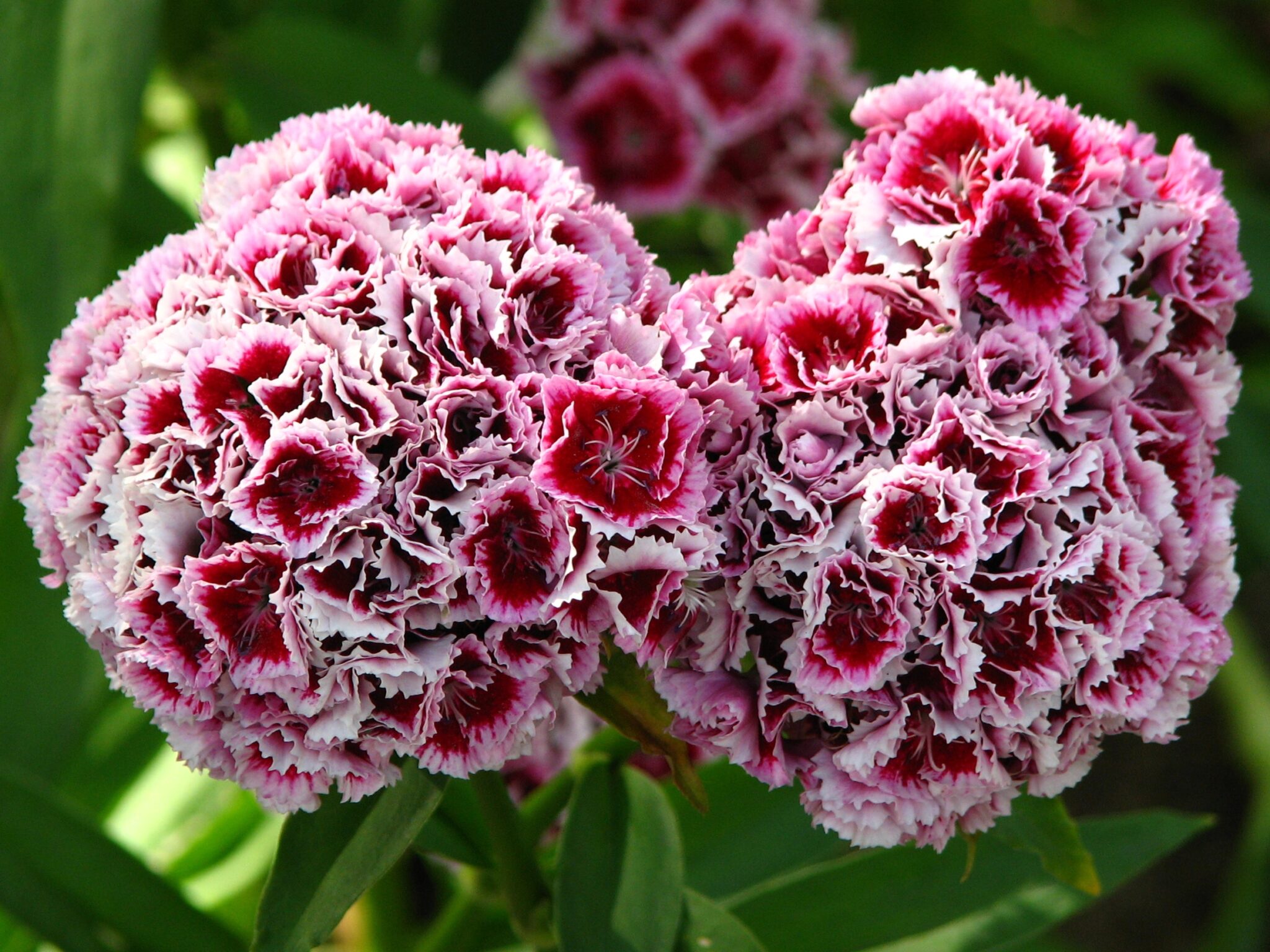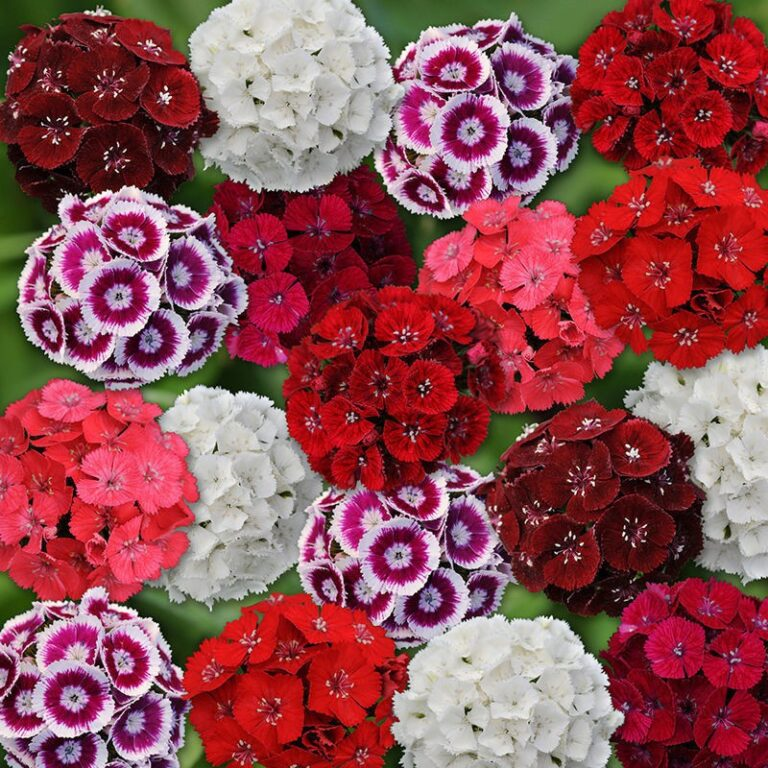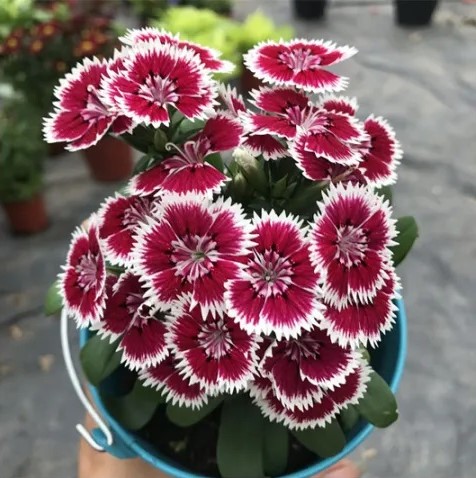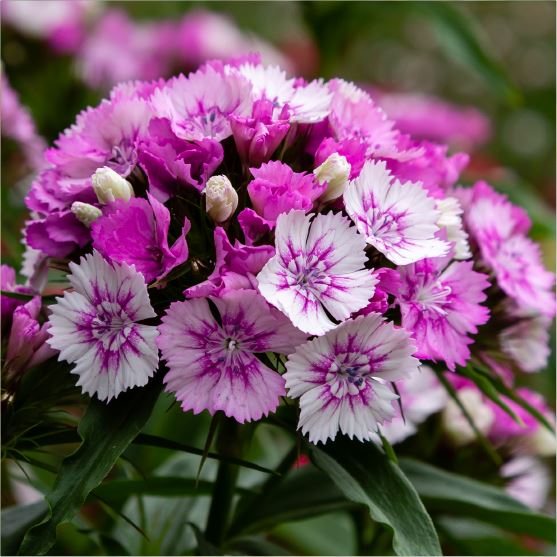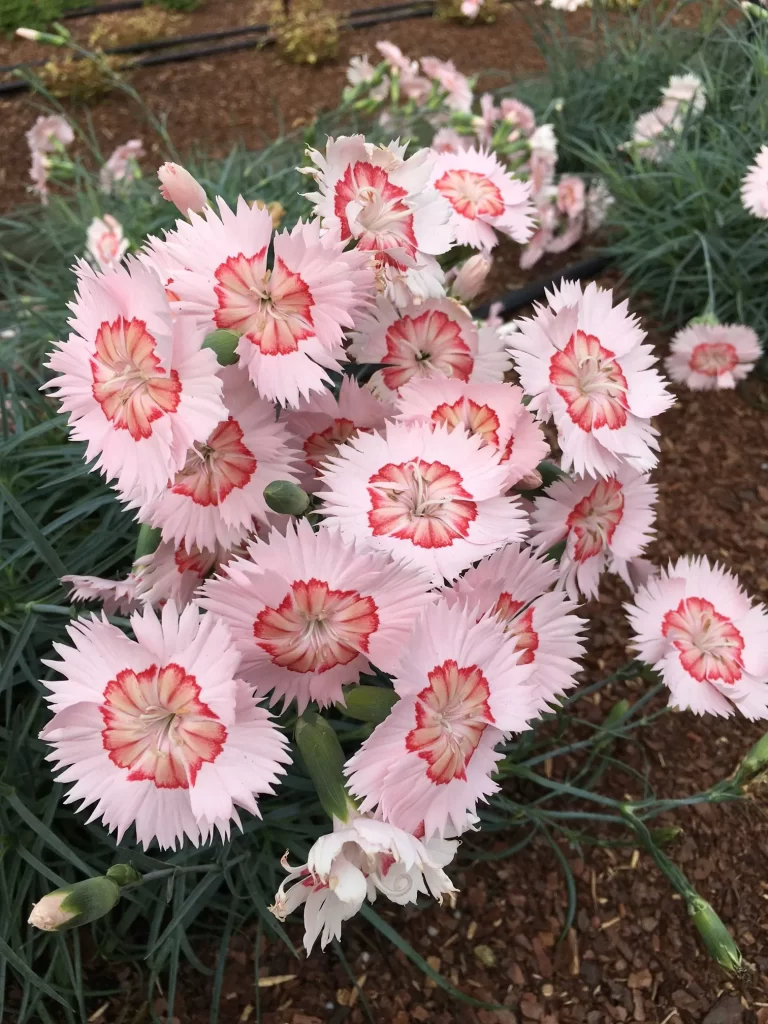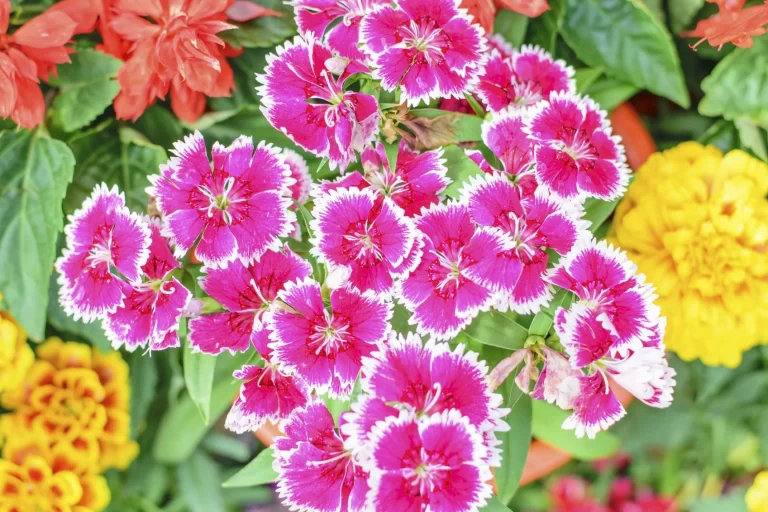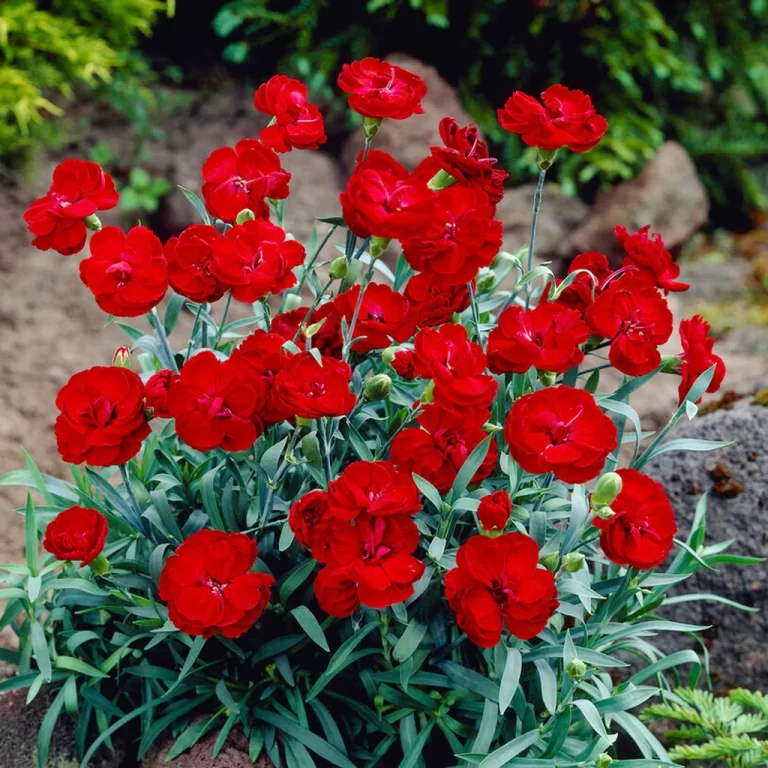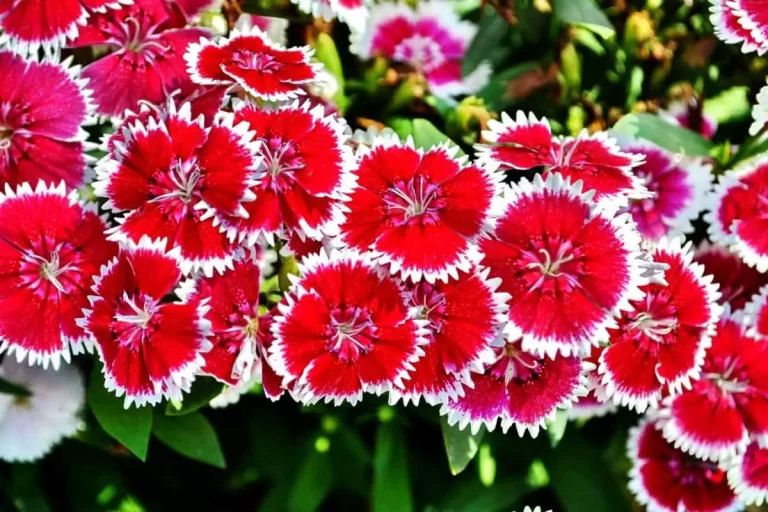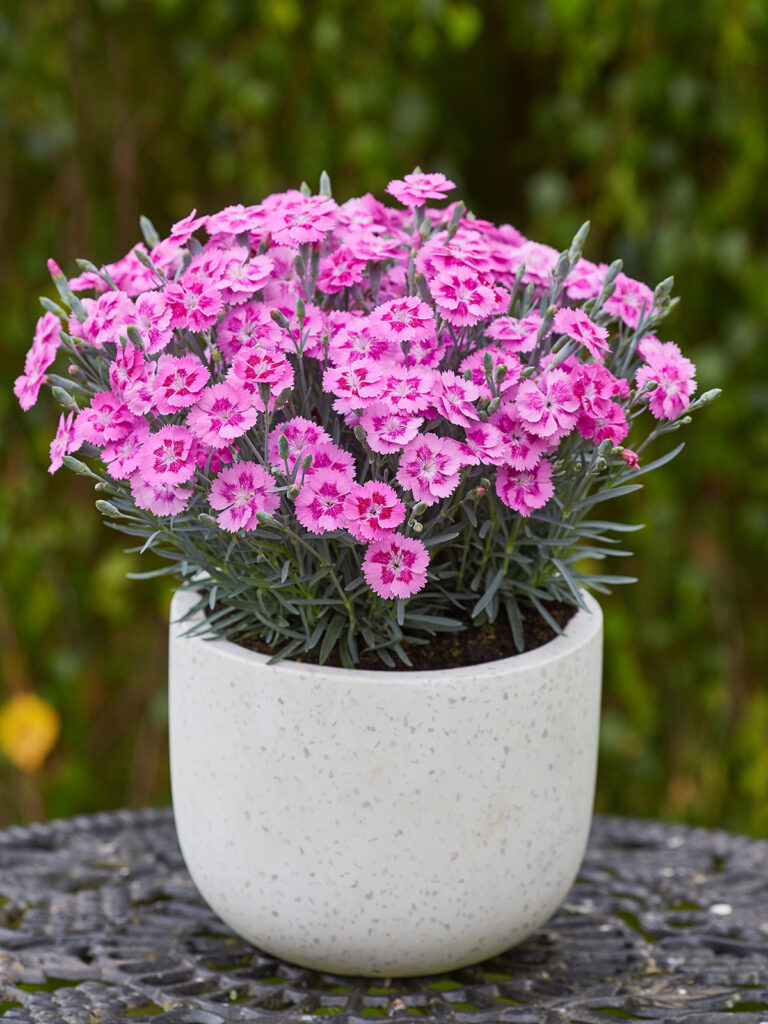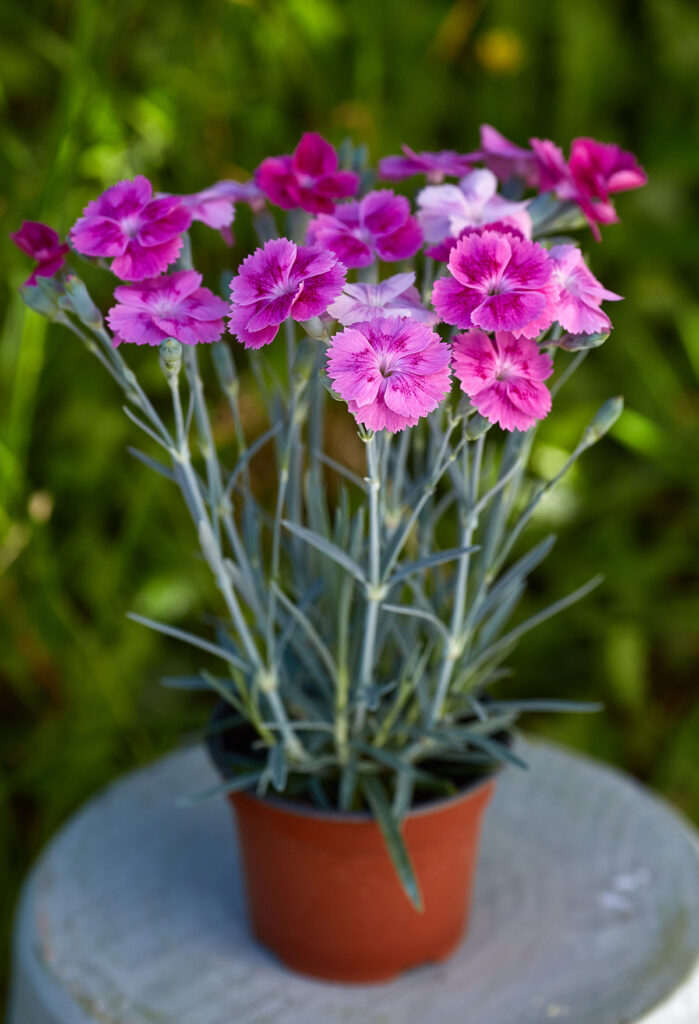A cottage garden favorite, Dianthus is a genus of flowering plants in the Caryophyllaceae family. Of the 300 species, most are native to Europe and Asia, some are native to North Africa, and one alpine species is native to the arctic regions of North America. Many are herbaceous perennials, but there are also some hardy annuals and biennials, and even some that are classified as dwarf shrubs. They have narrow, linear leaves with a blue-green hue, facing each other on narrow stalks. Flowers typically consist of five petals, often with a ruffled or zigzag border, in shades of white or red ranging from pale pink to deep maroon. They are often bicolored.

With a long flowering season from late spring to early fall, her attractive mounds and pretty flowers are complemented by a heady scent of spicy sweetness reminiscent of cinnamon and cloves. With so much to love, you’re probably dying to learn how to grow these beauties in the garden. The following comes: cultivation and history One of the earliest cultivated flowers, Dianthus species have been revered for centuries and were widespread in ancient Greek and Roman times. They were often used in elaborate friezes on important buildings and added to festive garlands. The name of this genus derives from a combination of the Greek words dios (god) and anthos (flower) or “flower of the gods”.
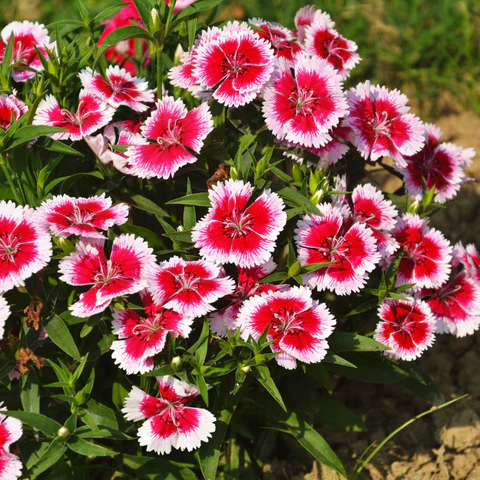
How they got the name is a bit unclear, but there are a few viable stories to consider. One myth has it that Diana, the Greek goddess of the hunt, blamed a flute-playing shepherd for scaring away her prey. In a fit of anger she ripped out his eyes, and where they fell grew red carnations—a symbol of innocent blood. According to Christian mythology, carnations first bloomed along the Via Dolorosa, where Mary’s tears flowed as Jesus carried the cross to Calvary – another reference to the symbolism of the innocent blood. How to grow dianthus flowers
Hardiness varies between species, ranging from zones 3 to 9, but all are easily grown in the home garden.

